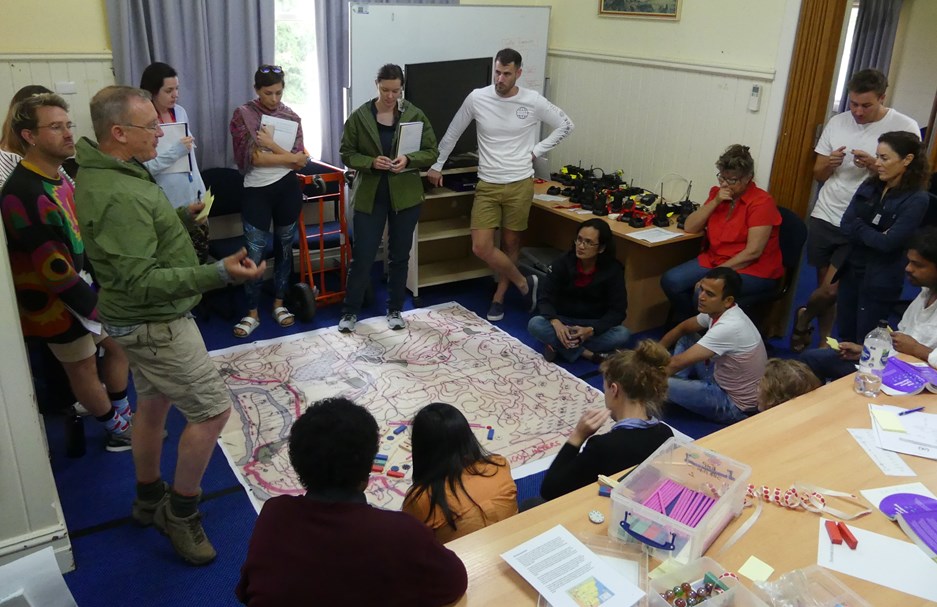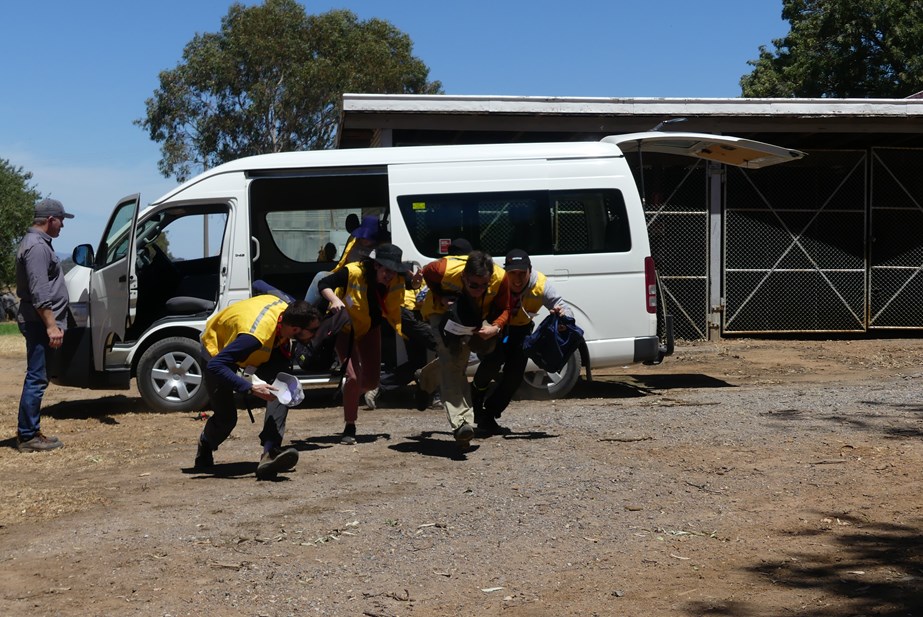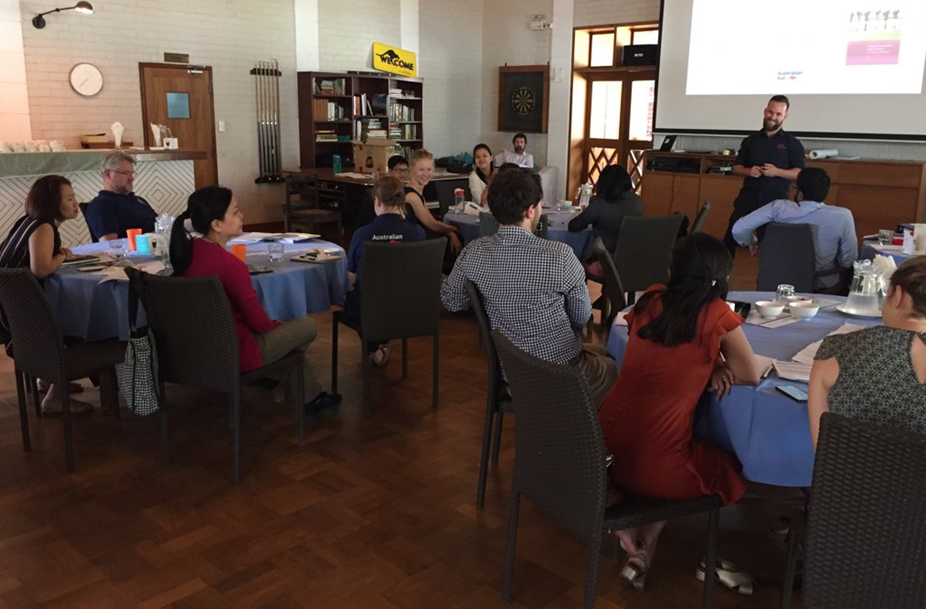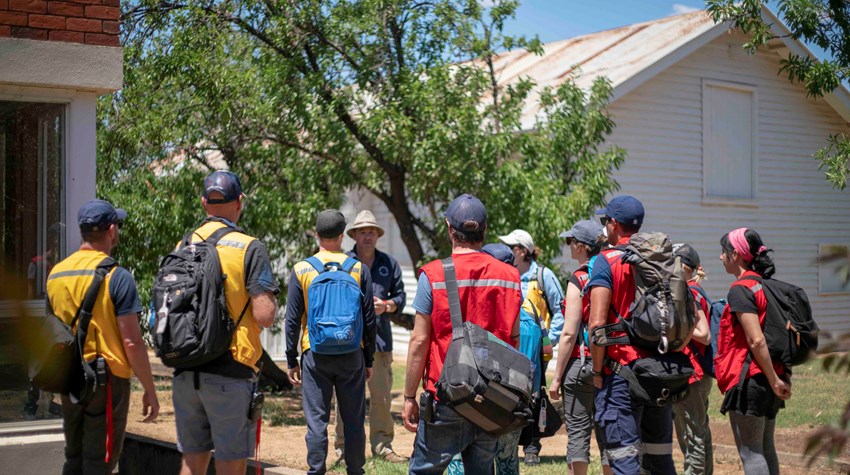The Australia-Assists supported EHP course opened the year on February 6–11, providing foundational knowledge of the global humanitarian system to 24 participants, including potential Roster members, NGO partners, and government employees. With the launch of the updated Sphere Handbook in November 2018, participants were introduced to the revisions as well as other key standards, which they immediately put into practice across a number of field exercises.
“My knowledge has increased significantly in the technical areas of humanitarian relief work,” said EHP Participant Yvonne. “I am now familiar with the principles, standards, and resources for the different sectors.”

February EHP participants during a camp planning exercise where they were tasked to design a refugee camp using Sphere guidelines.
Hostile Environment Awareness Training (HEAT), also supported by Australia Assists, was delivered to 31 participants on February 13–17. Designed to prepare humanitarians for the challenging environments they may face in the field, participants learnt about personal safety and security issues and the measures they can take when in a hostile or insecure situation. Participants were also provided with emergency first aid training, through integrated Tactical Emergency Casualty Care (TECC) training by Real Response, including how to manage ballistic, penetrating, and blast trauma.
“The emergency first aid component taught me skills that I have no doubt will come to me if I am faced with similar situations in the future,” said HEAT Participant Claire. “We were put into scenarios that not only tested our new knowledge and skills, but allowed us to learn about how we may react to challenging situations in a safe environment.”

Participants during a movement under fire exercise in the February session of HEAT.
February also saw RedR Australia conduct Crisis Management Training for 20 TEAR Australia staff at their Melbourne office. Coordinated by RedR Australia Associate Trainer Meaghan Barry, the training involved a theoretical component before staff participated in a simulation where they had to work together to manage a crisis.
“Conducting training prior to the simulation was a great opportunity for people to ask questions, gain a broader understanding of what a crisis is, and to prepare for the simulation so that they could get the most out of it,” said Meaghan.
“All of the participants felt that the training simulation and debrief assisted them to understand their role within a Crisis Management Team and how the team would work together in a crisis.”
On March 6–8, RedR Australia ran its three-day Child Protection in Emergencies (CPiE) course at its head office in Melbourne. Associate Trainer and Protection Specialist, Natalie McCauley, delivered the training to 10 humanitarian practitioners, providing the opportunity to broaden their understanding of child protection within the humanitarian system, and equip them with the CPiE tools and strategies to apply in the field.

Training Manager Mark delivering Emergency Response Training for regional DFAT staff in Yangon.
March also saw RedR Australia’s Training Manager, Mark Gossage, deliver Humanitarian Emergency Response Training for regional Department of Foreign Affairs and Trade (DFAT) embassy staff in Yangon, Myanmar. Across a two-day course, DFAT staff practiced coordinating Australia's response to a simulated earthquake and support for the delivery of life-saving assistance.
RedR Australia’s next scheduled course is Essentials of Humanitarian Practice (EHP), which will be held on April 26–May 1. Hostile Environment Awareness Training (HEAT) will follow on May 2–6. Register at our website: https://www.redr.org.au/training/humanitarian-training/.


